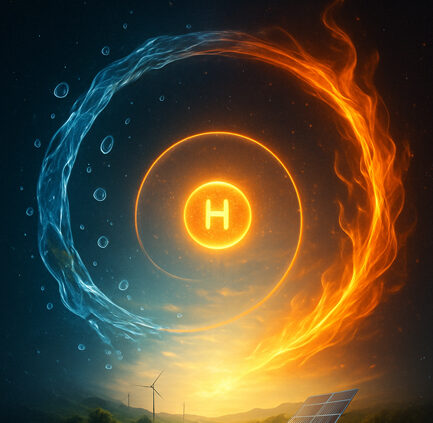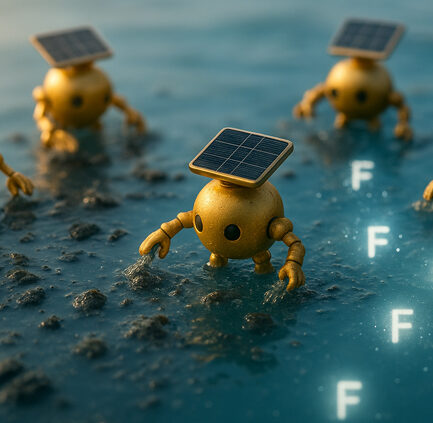Introduction: Evaporation – A Hidden Reservoir of Energy
Water evaporation is one of Earth’s most abundant and continuous natural processes. It plays a critical role in climate regulation, weather patterns, and the global water cycle. Yet, despite accounting for as much as 50% of the solar energy absorbed by Earth’s surface, this vast energy flow remains largely untapped for electricity generation.
Researchers from The Chinese University of Hong Kong (CUHK) and National University of Singapore (NUS), led by Engineer Ady Suwardi, have pioneered a technology that harnesses evaporation’s latent heat to generate electricity evapolectrics. Their work challenges conventional perceptions of heat dissipation, offering an innovative method to convert moisture into electrical power using thermoelectric generators (TEGs).
Understanding the Fundamentals: Thermoelectric Conversion of Evaporation Energy
What Drives Evapolectrics?
The core principle of evapolectrics lies in creating a temperature gradient (ΔT) across a thermoelectric device, where one side is actively cooled by evaporation, and the other side is maintained at ambient temperature.
- Evaporation Cooling: When water evaporates from a surface, it absorbs energy in the form of latent heat, cooling the surface.
- Thermoelectric Effect: This temperature difference induces a flow of electrons within thermoelectric materials, producing electrical voltage (open-circuit voltage, VOC) and power.
By combining these two phenomena, evapolectrics converts the latent heat of vaporization normally dissipated into the environment into usable electricity.
Device Architecture: Engineering for Efficiency
Key Components
- Thermoelectric Generators (TEGs):
These semiconductor-based devices convert thermal energy directly into electrical energy. The efficiency of this conversion depends on the temperature difference between the hot and cold sides. - Evaporation-Enhanced Heat Sink:
The cold side of the TEG is coupled with a water-soaked hydrogel or a graphite-coated aluminum plate, which facilitates efficient evaporation by increasing surface area and water retention. - Heat Sink at Ambient Temperature:
The opposite side is connected to a heat sink that remains at room temperature, ensuring continuous heat flow. - Graphite Coating for Enhanced Performance:
The porous graphite coating increases surface roughness and enhances the hydrophilic nature of the heat sink, promoting uniform water distribution and improving evaporation rates.
Key Experimental Findings
Temperature Profiles and Wind Effects
Graphite-Coated vs Noncoated Heat Sinks
Thermal imaging revealed that graphite-coated heat sinks provided more uniform cooling and greater temperature retention compared to noncoated ones.
- Lower Surface Temperature: The coated surfaces maintained a cooler state for longer durations.
- Higher Temperature Gradient: The greater retention of cooling improved the ΔT across the TEGs.
The Role of Wind Speed
Evaporation depends on air movement, and experiments examined wind speeds from 1.0 to 3.5 m/s
Findings include:
- Optimal evaporation occurred at 2.0–2.8 m/s, beyond which heat exchange from surrounding air increased, leading to faster evaporation but poorer temperature retention.
- A plateau effect was observed beyond 2.0 m/s, where increased wind speed no longer improved cooling due to competing heat intake.
These results confirm that natural airflow conditions are sufficient to drive evaporation-based power generation without requiring specialized environmental setups.
Comparison with Other Energy Harvesting Technologies
Evapolectrics excel in both power density and reliability:
| Technology | Power Density (W/m²) | Intermittency | Notes |
|---|---|---|---|
| Evapolectrics | 4.2 | No | Continuous operation, high flux |
| Indoor Photovoltaics | ~0.1 | Yes | Requires light exposure |
| Body-heat TEGs | ~0.02 | No | Limited by small heat flux |
| PENG (Piezoelectric) | ~0.01 | Yes | Mechanical stress required |
| TENG (Triboelectric) | ~0.02 | Yes | Material wear, intermittent |
| Hydrovoltaics | ~0.01–0.05 | Yes | Dependent on water flow |
| Radiative Cooling | ~0.1 | Yes | Environmental constraints |
Evapolectrics not only outperform other technologies but also avoid intermittency issues, making them particularly suited for wearable electronics and IoT devices.
Real-World Applications: From Wearables to Smart Infrastructure
Wearable Devices
The ability to operate under realistic indoor conditions enables:
- Fitness trackers
- Smartwatches
- Wireless medical sensors
A 7 × 7 array of devices successfully charged smartphones, fitness trackers, and smartbands, illustrating scalability.
Battery-Free Electronics
A 25 cm² device, roughly the size of a palm, could sustain the continuous power requirements of many low-energy electronics without batteries.
Off-Grid Power Solutions
In regions with high humidity and moderate temperatures, such as coastal and tropical areas, evapolectrics offer a sustainable and maintenance-free alternative for remote or disaster-prone areas.
Global Impact: The Scale of Untapped Energy
The global evaporation rate is estimated at 5 mm/day, translating to:
- ~108 terajoules of evaporation enthalpy annually
- Even at a modest 0.1% conversion efficiency, this represents ~20 GW of harvestable energy
- Equivalent to powering 20 million homes or 4 million electric vehicles
This scalable and sustainable energy source complements other renewable systems, extending energy access and reducing reliance on fossil fuels.
Conclusion: A New Frontier in Ambient Energy Harvesting
Evapolectrics represent a paradigm shift in how we perceive and utilize natural processes. By transforming the latent heat of evaporation previously considered waste into reliable, scalable electricity, this technology opens doors to new possibilities in energy harvesting, wearable technology, and smart infrastructure.
With continued advancements in thermoelectric materials, optimized designs, and integration into real-world environments, evapolectrics are poised to play a major role in the next generation of self-powered devices and sustainable energy systems.
As the world faces growing energy demands and environmental challenges, tapping into the unseen energy of evaporation could become one of the most innovative and impactful solutions for the future.





